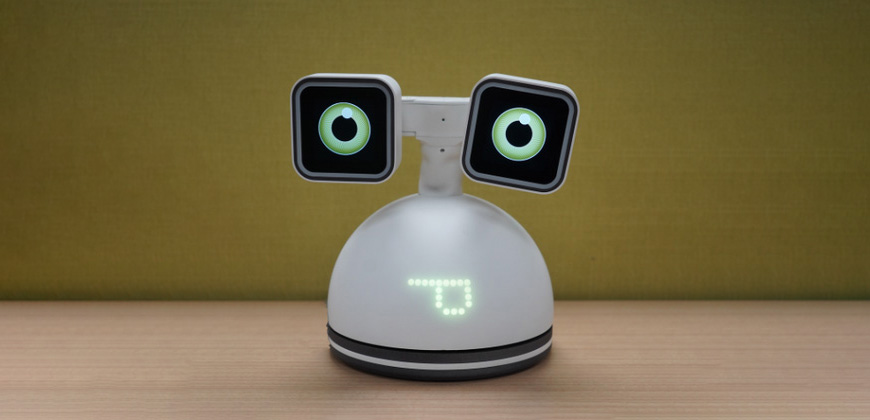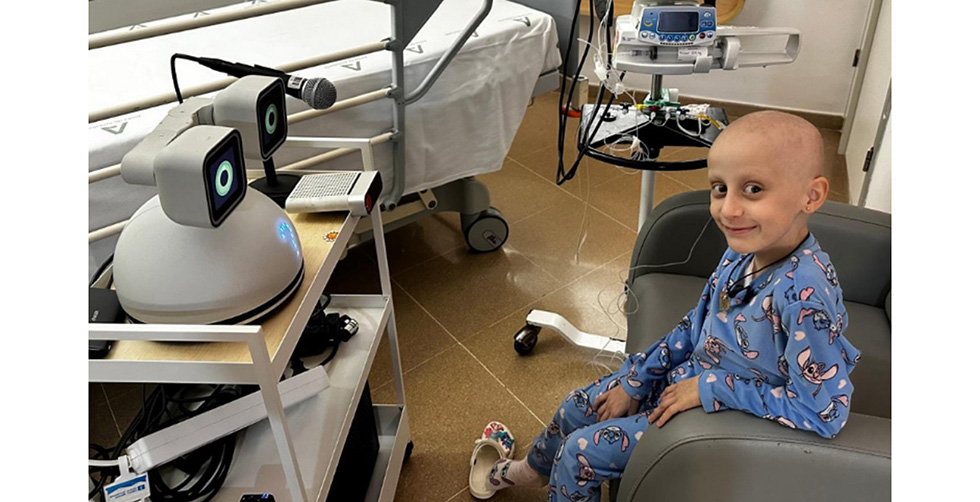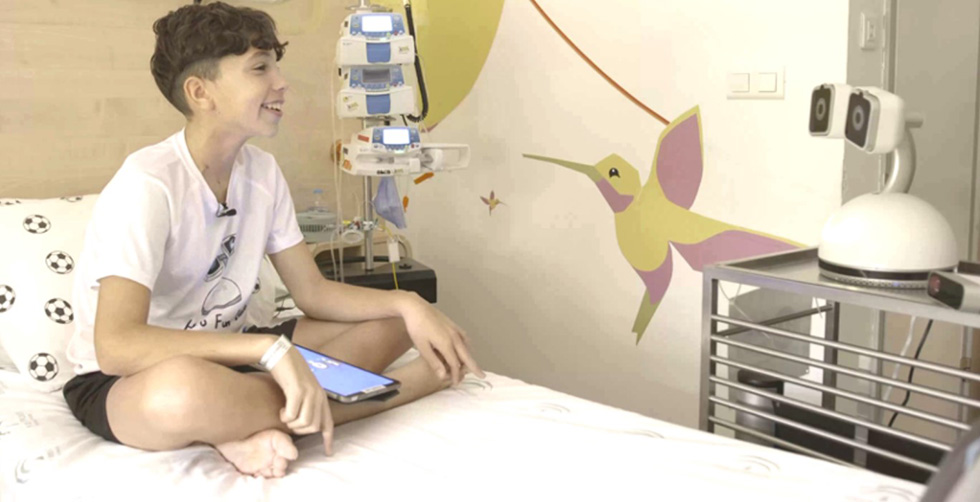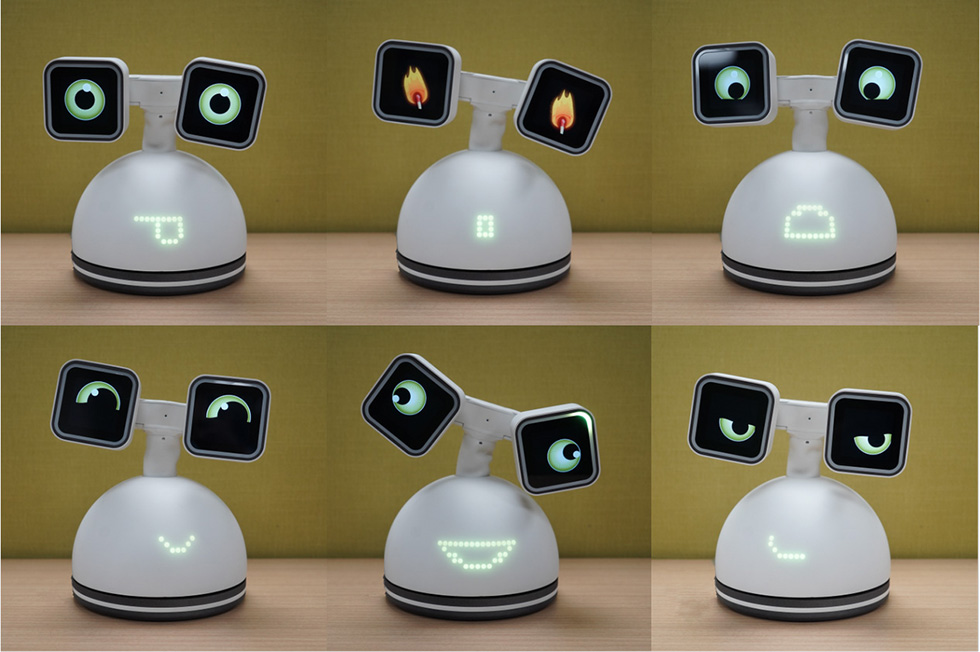Honda Introduces AI-powered Social Robot, Haru, to University Hospital in Spain
TOKYO, Japan, November 29, 2024 – Honda Research Institute Japan Co., Ltd. (HRI-JP), a Honda R&D subsidiary responsible for the research of cutting-edge technologies, has officially introduced its AI-powered social robot named “Haru” at the Virgen del Rocío University Hospital (HUVR) in Seville, Spain, to enhance the well-being of children while in the hospital.
At the Annual Gala against Childhood Cancer, held on November 28 local time, at Casino de la Exposicion in Seville, Spain, the HUVR introduced Haru as one of the projects HUVR is implementing to improve the lives of children with cancer, who are in the hospital for long-term treatment.

HRI-JP has been developing Haru, an AI-powered social robot, as a “tangible AI system” striving to realize a society where robots coexist as partners of people and to facilitate communications that create connections among people. Haru was designed to be a social robot that makes people smile through expressive communications and forms empathetic relationships with people. As a compact desk-top robot with a total height of 30cm (12 inches), Haru can be placed on a table to engage in communications with people.
Haru obtains biometric information of the user, such as facial expressions and voice tones, through its built-in camera and microphones, then analyzes the information obtained to understand the user’s current state, and interacts with each user in accordance with the result of analysis, using empathetic expressions and emotionally supportive responses. Moreover, Haru can also be linked to a wristwatch-type wearable sensor worn by the user and analyze the user’s conditions in greater detail.
Furthermore, as a robot, Haru does not have any human attributes such as gender, race or nationality, and is always capable of communicating from a neutral perspective, enabling Haru to effectively facilitate communication beyond generational and cultural differences, especially in group communication.
HUVR had been conducting a demonstration experiment using Haru in the pediatric oncology ward of the hospital since 2021 for the purpose of enhancing both the clinical and emotional care of young patients. Since the results of the experiment have confirmed a certain level of positive effects on children with cancer, the official decision was made to advance the project with full-fledged utilization of Haru, introducing 10 units to be used in various situations in the children’s daily lives in the pediatric oncology unit.


Key results of the demonstration experiment at the HUVR
1. Assisting emotional and cognitive assessments
Haru has been assisting the hospital’s neuropsychologists in conducting emotional and cognitive assessments. Using AI technology, Haru communicates with children; analyzes their biometric information, such as facial expressions and voice tones, obtained through its built-in cameras and microphones; and assist neuropsychologists in conducting emotional and cognitive assessments.
Due to the amount of time the assessment takes, there is a limit to the number of assessments the neuropsychologists can conduct each year: the number had been limited to 510 per year including follow-up consultations until now. With the introduction of Haru, the number of assessments the hospital can conduct each year is expected to increase to as many as 4,500.
2. Assisting rehabilitation activities
Haru has been supporting intellectual and physical rehabilitation programs provided to young patients at the hospital. Haru learns the rehabilitation programs and can guide the children through the process while engaging them in conversation. The demonstration experiment showed that 95% of children were more actively engaged in rehabilitation while receiving guidance from Haru, compared to conventional human guides.
3. Serving as a companion in playrooms and hospital rooms
Young patients who undergo long-term hospital stays for treatment spend a lot of time alone in their rooms. By communicating with the children, Haru can offer entertainment and cognitive stimulation, and help to soothe their feeling of loneliness, contributing to the enhancement of emotional care the hospital provides.
4. Offering educational support
Haru connects the hospital rooms of the children who have not been able to attend school with the classrooms of their schools online, and facilitates the communication as an intermediary. This provides children at the hospital with opportunity to receive education together with children in the classroom and to interact with each other among children.

Comments by the Virgen del Rocío University Hospital in Seville (HUVR)
“We have been conducting joint research with HRI-JP for several years now, and gained wonderful results. We have identified that Haru holds great potential in bringing happiness to children. Typically, technologies used in hospitals focus on medical treatments or physical well-being. However, Haru has positive psychological effect of lightening the mood of our young patients and also contributes to the well-being of the hospital as a whole. The support that Haru provides, enabling children under hospital care to feel more happiness and connection with others, is unique only to Haru and offers valuable benefits not found in traditional medical care. We believe that Haru is a groundbreaking presence that creates an environment where young patients can enjoy their time here at our hospital.”
Comments by Satoshi Shigemi, Honda Research Institute Japan Co., Ltd. (HRI-JP)
“Based on the founding spirit of Honda, ‘using our technology to help people’ and ‘understanding people is the very essence of Honda monozukuri (art of making things),’ Honda Research Institute has been conducting research into cutting-edge technologies which have the potential to enhance positive psychological effects of people and the overall well-being of society. We are delighted by the result of our joint research with Virgen del Rocío University Hospital that shows Haru has been able to be a companion to the children at the hospital, lifting up their spirits, and bringing smiles to their faces. Moving forward, we will continue our efforts to further advance Haru as a robot which can co-exist with people 24/7 and be more helpful to young patients as well as all hospital staff to contribute to the well-being of the hospital a whole.”
About Honda Research Institute (HRI)
HRI was established in 2003 as a research operation which will go beyond the framework of the traditional business domain of the Honda Group and take on challenges to address issues facing humanity. Each of three HRI operations, located in Japan, the United States, and Germany, is engaged in “frontier research” with a focus on next-generation AI, including the exploration of new technologies such as quantum technology. By using Pasteur's Quadrant approach to research, which calls for the simultaneous pursuit of principles, or science, and real-world applications, HRI is striving to quickly give shape to new technologies and ideas, and create new value that can be useful to society. The research outcomes generated by HRI will lead toward the development of future Honda technologies in a wide range of technology fields, including but not limited to the areas of safety, the environment and next-generation mobility.